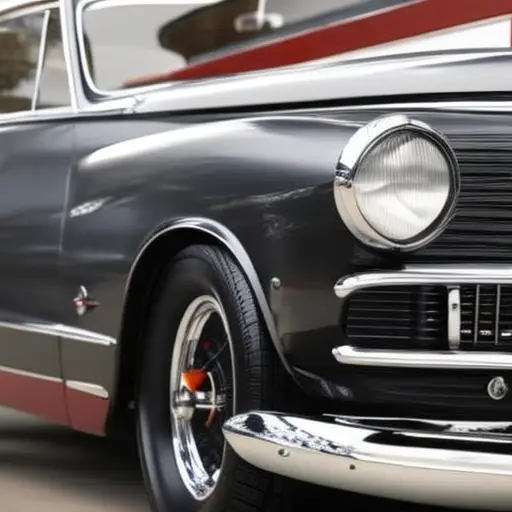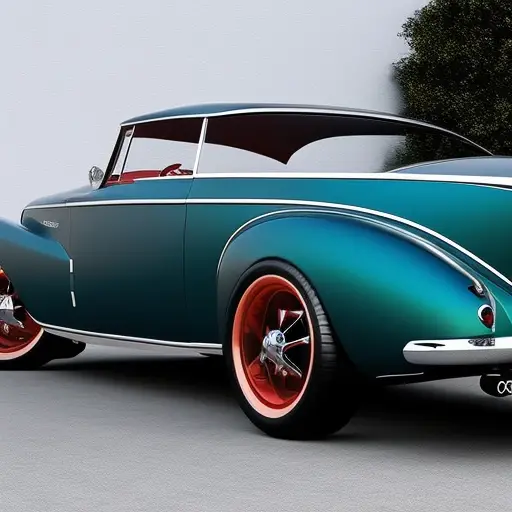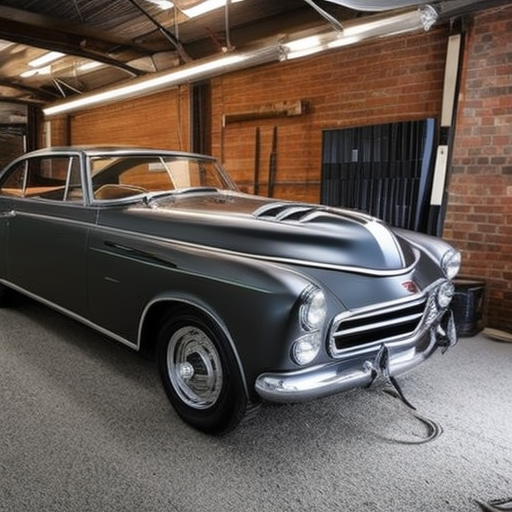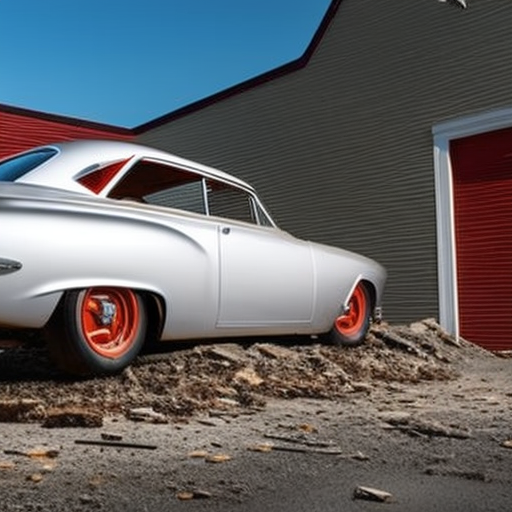How to Choose the Right Paint for Classic Car Restoration
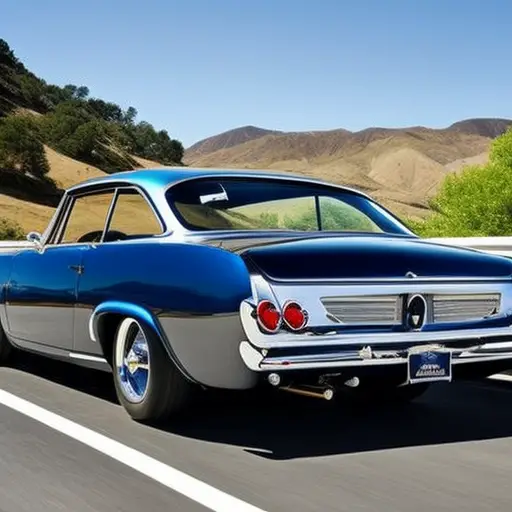
In the intricate world of classic car restoration, the choice of paint holds a pivotal role in preserving the authenticity and allure of vintage vehicles.
Selecting the right paint encompasses a meticulous balance between color accuracy, durability, authenticity, application, finish, and environmental impact.
As discerning restorers seek to honor the heritage of these automotive treasures, a comprehensive understanding of these factors becomes imperative to ensure a flawless and enduring restoration.
Assessing Color Accuracy
When assessing color accuracy for classic car restoration, the use of color matching technology is essential to ensure an exact match to the original paint color. Matching pigments to achieve historical accuracy in the restoration of retro cars requires a meticulous approach.
Utilizing a color chart that provides a comprehensive range of color options is crucial to identify the exact shade needed for the classic car’s restoration. This process involves analyzing the color composition of the original paint, considering factors such as the type of pigments used, the application method, and the aging of the existing paint.
Advanced color matching technology enables automotive restorers to precisely replicate the authentic colors used in classic cars, ensuring a faithful restoration that adheres to historical accuracy. By utilizing sophisticated color matching techniques, restorers can achieve seamless color transitions and eliminate discrepancies between the new and existing paint, resulting in a visually cohesive and historically precise restoration.
Evaluating Paint Durability
Assessing the durability of the paint is essential in selecting the right paint for classic car restoration. When evaluating paint durability, several factors should be considered:
-
Durability Testing: It’s crucial to assess how the paint holds up under various environmental conditions, including exposure to sunlight, moisture, and temperature variations. Look for paints that have undergone rigorous durability testing to ensure longevity.
-
Paint Longevity: Understanding the expected lifespan of the paint is important. Consider factors such as resistance to chipping, cracking, and fading over time. A durable paint will maintain its integrity and appearance for an extended period.
-
Adhesion and Flexibility: The ability of the paint to adhere to the surface of the car and withstand movements and vibrations is paramount. Evaluate the paint’s flexibility to prevent it from flaking or peeling, especially in areas prone to flexing, such as the car’s body panels.
Understanding Paint Authenticity
To ensure the authenticity of the paint used in classic car restoration, it is essential to verify its original formulation and composition, thereby preserving the historical accuracy of the vehicle’s appearance. Authenticity verification involves meticulous research into the specific paint codes and types originally used on the classic car model in question. This often requires consulting historical documentation, such as original factory records, paint catalogs, and expert opinions.
Additionally, modern technology, such as spectrophotometers, can be utilized to analyze the chemical composition of the original paint layers, aiding in the recreation of an accurate color match. It is crucial to consider the environmental and technological factors that may have affected the paint’s appearance over time.
Considering Application and Finish
After verifying the authenticity of the paint, the next crucial step in classic car restoration involves determining the most suitable application methods and finish to achieve a professional restoration.
-
Application Techniques: Selecting the appropriate application technique is essential to ensure an even and durable coat of paint. Factors such as the type of paint (e.g., single-stage or two-stage), the condition of the vehicle, and the desired finish must be considered when choosing between methods like spray gun application, airless spraying, or traditional brush and roller application.
-
Surface Preparation: Proper surface preparation is vital for the success of the paint job. This includes thorough cleaning, removal of rust, dents, and imperfections, as well as sanding the surface to create an ideal foundation for the new paint. Additionally, applying primers and sealers may be necessary to enhance adhesion and provide a smooth base for the topcoat.
-
Finish Selection: The choice of finish, whether it’s high gloss, matte, or metallic, greatly impacts the final appearance of the classic car. Factors such as the car’s make and model, historical accuracy, and personal preferences should be considered when selecting the finish to ensure it aligns with the overall restoration goals.
Exploring Environmental Impact
When considering the selection of paint for classic car restoration, it is important to explore the environmental impact of the chosen products. Environmental regulations play a crucial role in the automotive industry, and classic car restoration is no exception. When choosing paint for classic cars, it’s essential to consider the environmental regulations in your region. Many countries have strict guidelines regarding volatile organic compounds (VOCs) and hazardous air pollutants (HAPs) emitted during the painting process. Selecting paints that comply with these regulations not only ensures legal compliance but also demonstrates a commitment to sustainability practices.
In addition to regulatory compliance, sustainability practices should also be a priority when choosing paint for classic car restoration. Opting for water-based or low-VOC paints can significantly reduce the environmental impact compared to traditional solvent-based paints. These alternatives minimize harmful emissions and contribute to a healthier working environment for restoration enthusiasts. Furthermore, utilizing paint products that are produced using sustainable manufacturing processes and packaging materials can further enhance the overall environmental sustainability of classic car restoration projects.
Frequently Asked Questions
How Can I Ensure That the Paint I Choose Will Be a Good Match for the Original Color of My Classic Car?
To ensure a good match for the original color of a classic car, it’s crucial to consult historical paint codes and utilize color matching technology. Consider factors like vintage appeal and the car’s specific color nuances for an authentic restoration.
Are There Any Specific Factors to Consider When Choosing Paint for a Classic Car That Will Be Regularly Driven and Exposed to the Elements?
When choosing paint for a classic car regularly driven and exposed to the elements, durability factors, color matching, authenticity verification, the application process, and environmental impact are critical considerations. Eco-friendly options can mitigate environmental impact.
What Steps Can I Take to Verify the Authenticity of the Paint I Am Considering for My Classic Car Restoration Project?
To verify paint authenticity for a classic car restoration, conduct thorough research on the original color and finish. Utilize paint codes, historical records, and expert consultation. Matching the paint to the original specifications ensures authenticity and enhances the vehicle’s value.
What Are Some Key Considerations for the Application Process, Especially if I Am Doing the Painting Myself?
When considering the DIY application process for classic car restoration, it is crucial to focus on tips and techniques for paint matching, ensuring color accuracy. Attention to detail in surface preparation and application methods is key.
What Environmental Impact Should I Be Aware of When Choosing Paint for Classic Car Restoration, and Are There Any Eco-Friendly Options Available?
When considering paint for classic car restoration, environmental impact is crucial. It’s important to be aware of the emissions and waste associated with conventional paints. Eco-friendly options, such as water-based paints, can significantly reduce environmental harm.
Conclusion
In conclusion, choosing the right paint for classic car restoration involves assessing color accuracy, evaluating paint durability, understanding paint authenticity, considering application and finish, and exploring environmental impact.
It is essential to select a paint that not only matches the original color but also provides durability and authenticity.
Like a skilled artist selecting the perfect brushstroke to bring a masterpiece to life, choosing the right paint is crucial in restoring a classic car to its former glory.


